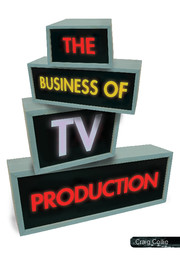Book contents
- Frontmatter
- Contents
- Preface
- Diagrams and tables
- Abbreviations
- Part A Opiate of the people: the television industry
- Part B Massage parlour: development and funding of a project
- Chapter 5 The concept
- Chapter 6 Development of the project
- Chapter 7 Approaches to genre development
- Chapter 8 The pursuit of funding
- Chapter 9 Management of a creative project
- Chapter 10 Multi-platform projects
- Chapter 11 Marketing and distribution
- Part C Riding the tiger: management of the production
- Part D A nod to the gatekeepers: the environment of television
- Index
- References
Chapter 7 - Approaches to genre development
Published online by Cambridge University Press: 05 June 2012
- Frontmatter
- Contents
- Preface
- Diagrams and tables
- Abbreviations
- Part A Opiate of the people: the television industry
- Part B Massage parlour: development and funding of a project
- Chapter 5 The concept
- Chapter 6 Development of the project
- Chapter 7 Approaches to genre development
- Chapter 8 The pursuit of funding
- Chapter 9 Management of a creative project
- Chapter 10 Multi-platform projects
- Chapter 11 Marketing and distribution
- Part C Riding the tiger: management of the production
- Part D A nod to the gatekeepers: the environment of television
- Index
- References
Summary
Chapter 6 outlined the main components in a general process of program development. It didn't go into variations of this process for different genres, but in practice each genre has distinctive characteristics within the general approach to development. In the same way that the basic proposal document has different emphases for broadcasters and investors, the generic approach to program development is varied to meet the particular needs of the program.
Within the variations of approach that are commonly used, there are typical conventions for each television genre. Television drama and sitcom development, for instance, revolve around defining the characters and their circumstances, and then developing scripts. On the other hand, documentary development is about research. As an actuality genre, it has its characters and their circumstances already defined, along with a lot of peripheral and irrelevant material. Here the task is to unearth this information through research and sift through it to find underlying themes that can ground the program. Game shows and reality television are about the rules of the game and the complexity of the production machinery. Sketch comedy is about assembling teams of writers and performers and devising a production schedule that can sustain the necessary relentless output of sketches. And so on.
Drama characters and setting
The log line
Like all television programs, a drama series (or a telemovie or sitcom) starts from a log line, a one-sentence description that captures the essence of the program.
- Type
- Chapter
- Information
- The Business of TV Production , pp. 116 - 133Publisher: Cambridge University PressPrint publication year: 2007



